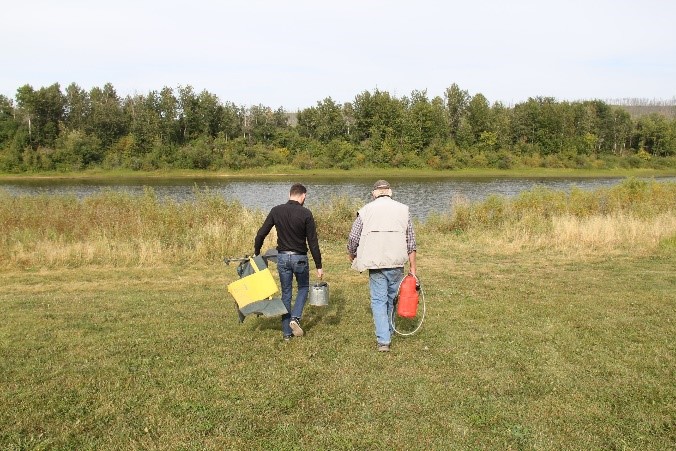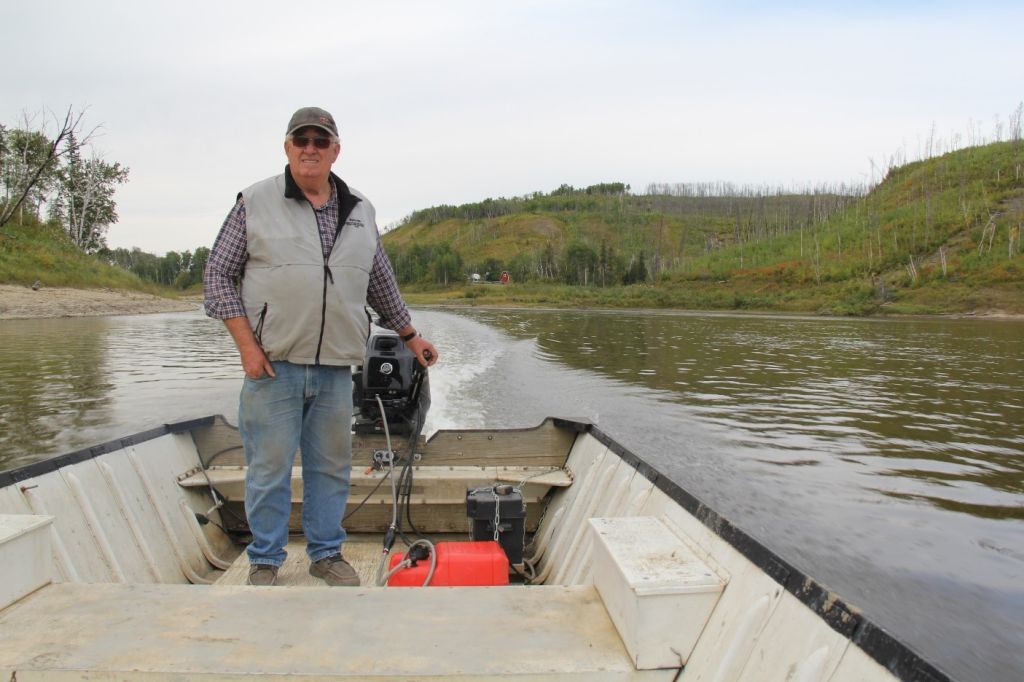written by Joshua Scrimshaw, Communications Assistant
Fort McMurray, Alberta is often regarded as the energy capital of Canada, but what isn’t talked about as much is that it’s brimming with rich culture, fascinating history, and a vibrant and resilient community. During Enserva’s recent visit up north for the Oil Sands Conference and Trade Show, we had the pleasure to dive head-first into the amazing past of Fort McMurray with local community ambassadors. One of these ambassadors was Jack ‘Torchy’ Peden, the grandfather of one of our employees. Many years ago, Jack moved to Fort McMurray with his father to capitalize on the bountiful opportunities within an emerging energy sector in Alberta. Jack’s father, Claire Peden, would go on to become Fort McMurray’s first mayor. Claire was instrumental in the construction of highway 63 and the development of infrastructure used to access Alberta’s Athabasca oil sands. Similarly, Jack would work directly in the energy sector, going through various industry roles before moving to Syncrude to raise a herd of 300 endangered northern Wood Bison in Alberta’s first fully reclaimed mine.

Prior to our arrival in Fort McMurray, Jack offered to take the Enserva communications team on a boat ride up the clearwater and back down to where the river merges with the mighty Athabasca. Before we arrived at the boat launch, Jack brought us to the Fort McMurray Heritage Shipyard. He explained how this shipyard stores historical dredging, transportation, and coast guard boats that traversed the Clearwater and Athabasca rivers to transport goods and people to remote communities surrounding Fort McMurray. The boats were moved, renovated, and put on display through thousands of volunteer hours, and with the support of Fort McMurray’s city council. The dedication of these local volunteers saved the artifacts from being melted down into scrap and created a place for both locals and tourists to learn about this important part of Alberta’s history. Jack was instrumental in the development of the shipyard, and as a ‘thank you’ the city named the administration building and gift shop the Jack ‘Torchy’ Peden Centre. According to Jack, “These boats are as old as 1946 and, in their heyday, they shipped millions of tons of construction equipment, personnel, and supplies to northern communities and mines, even making their way to the Arctic.”

After visiting the riverboats up close, Jack brought us down to the Fort McMurray Snye and talked about how the current boat launch was once Alberta’s largest airport. Back in the day, at any given time there were dozens of pontoon planes parked, landing and taking off to supply Fort McMurray with vital materials and goods. However, as the Clearwater River began to change, in the 2000s access for planes was reduced and eliminated shortly after. Today, the still-changing river has reduced access for boats, and Jack’s boat is one of the last remaining to still utilize the Snye for parking. Jack mentioned, “while dredging with modern equipment sounds more efficient, the lack of mobility on the water makes things more complicated than one may think, leaving the ‘dredge king’ title to the old P.W.D 250 Sternwheeler.” And yes, we did get our boat stuck in 6 inches of water trying to exit the launch, oops.
Once we broke free from the clutches of the silt and mud, Jack pointed the boat up the Clearwater and away we sailed. It wasn’t long before we were passing large metal structures that were fixed to the bank; however, they were showing their age through decomposition and a lack of structural support. We raised our eyebrows and Jack mentioned how these were early docks used for loading ships with material bound for northern Alberta. While some were built by the town, many were built by the United States military during WWII to increase access for the development of gas, diesel, and oil to aid in their fight.

These docks were instrumental in the development of Canada’s oil and gas industry and the remote communities of northern Alberta, creating a hub for supplies and helping to assert Fort McMurray as a leader in petroleum production.
As we scanned around the banks and witnessed the destruction from recent floods and fires, the bitumen-rich banks began to release the secrets of why Fort McMurray is so bountiful. As the banks rose several dozen feet, the collapsing material unearthed dark black patches of bitumen from the grey and dried-out surface layers. Noticeably, the banks grew larger, and the soil darkened as the river carved its way north. In fact, the soil was so rich with oil that it naturally seeped into the river and created that multi-color oil slick we all know too well. Amongst the riverbanks and brush were some decrepit boilers. Jack explained that these boilers were used by the earliest surveyors to extract oil from the dense bitumen. As we scanned the banks, hoping not to miss anything, Jack pointed out a dike made of nothing but bitumen. It looked as if it was crudely built without modern equipment. Jack enthusiastically explained to the communications team with an overwhelming sense of pride that this was some of the earliest efforts to extract oil in Alberta, going back nearly a century.
As the motor barreled the boat along the river, different points of interest rose above the bushes, and we looked on in awe. We approached the exit of the river and were enamored with the mixing waters of the Clearwater and Athabasca rivers. It was distinct where their water mixed as one was murky, and one was clear and blue. However, this would be the beginning of the end for our tour with Jack. After a short ride around the merging rivers, we turned back and headed for the Snye. Along the way, we passed Jack’s pride and joy, Peden’s point and the Peden family farm. When Jack first moved to Fort McMurray his family raised cattle and broke horses on a farm located across the Clearwater River, only accessible by boat or in winter. Unfortunately, it was badly affected by the 2016 wildfire and the following flood, destroying all but two buildings on his property. The pain of the events was evident in Jack’s eyes, but like the old pioneer who built the bitumen dike, he was an overcomer and not easily discouraged by setbacks.

Thank you, Jack, for the amazing tour and sharing your knowledge with the team at Enserva. We also extend our deepest appreciation to his wife Mary Jane, who assured us that we were in good hands, and whose only request was we have Jack back for dinner. It is because of people like Jack and Mary Jane, who poured their hearts and souls into the development of Alberta, that we enjoy the opportunities available today.
Thank you for ensuring Alberta’s rich history is not forgotten and will be passed along to our children.


